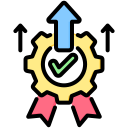Benefits of Digital Certifications for IT Career Development
Why Digital Certifications Matter Right Now
A trusted signal in a crowded market
Recruiters skim dozens of profiles each day; a recognized digital certification elevates yours instantly. It compresses your story into a credible, verifiable signal that says, “I can do this work today,” not “I might learn it someday.”
Built for speed and relevance
Unlike slow-moving curricula, digital certifications update frequently, tracking new cloud services, frameworks, and security practices. That freshness helps you stay aligned with real job requirements and reduces the time from learning to deploying.
A real-world pivot story
Maya, a help desk analyst, earned a cloud associate certification and showcased a small migration project in her portfolio. Two interviews later, she landed a junior cloud role. Tell us your certification pivot goals in the comments.
Mapping Certifications to Your IT Path
Cloud foundations to architecture
Start with a cloud fundamentals badge to validate the basics, then aim for role-based credentials in administration or architecture. Each step expands your scope—from provisioning services to designing resilient, cost-optimized systems.


Security pathways that scale
Security certifications often progress from baseline risk and compliance knowledge to hands-on incident response and threat hunting. Stack credentials to demonstrate depth, then specialize in cloud security, identity, or red teaming.

Salary signals and negotiations
Industry surveys consistently report a salary premium for certified professionals, especially when credentials match in-demand roles. Use your certification as a negotiation anchor, supported by project outcomes and measurable business impact.

Faster screening and interview invites
Applicant tracking systems and busy hiring teams rely on clear keywords. Certifications map precisely to those terms, moving your resume from screening to interview by reducing uncertainty about your baseline capability.

Calculate your ROI with intention
Track costs, study time, and post-cert results like interviews, offers, or internal projects won. Want a simple ROI worksheet? Comment “ROI” and we’ll share a template to make the math—and your next decision—crystal clear.
Learning by Doing: Labs, Sandboxes, and Simulations
Hands-on labs accelerate retention
Lab exercises reinforce concepts far better than passive reading. Provision resources, break things safely, and fix them. That cycle builds intuition you can rely on when incidents happen at 2 a.m. and documentation is not enough.
Sandbox environments reduce risk
Spin up isolated environments to practice upgrades, security policies, and performance tuning. You will learn the gotchas without risking customer data, then carry those lessons into real deployments with calm, repeatable steps.
Simulated exams mirror reality
Practice tests reveal knowledge gaps early. Treat them like flight simulators: note your misses, refine your checklist, and retest. Share your favorite lab or practice exam provider below to help others choose wisely.
Smart Preparation Strategies That Stick
Start with breadth: outline domains, skim official docs, and watch concise overviews. Then focus on depth: labs, whitepapers, and scenario questions. Schedule short daily blocks to prevent burnout and compound your progress.
Staying Relevant: Renewal, Stacking, and Lifelong Growth
Renewals as structured upskilling
Many programs offer continuing education credits, bridging everyday learning with renewal goals. Tie renewals to projects at work so each requirement becomes portfolio-worthy output—not just a checkbox.
Stack credentials with purpose
Combine a cloud associate with a security specialty, or a data analyst badge with a machine learning credential. Intentional stacking signals versatility and prepares you for cross-functional challenges on modern teams.
Build a living learning roadmap
Create a quarterly plan: one certification milestone, one portfolio artifact, one community commitment. Share your roadmap in the comments, and subscribe for monthly prompts that keep your momentum strong and measurable.
